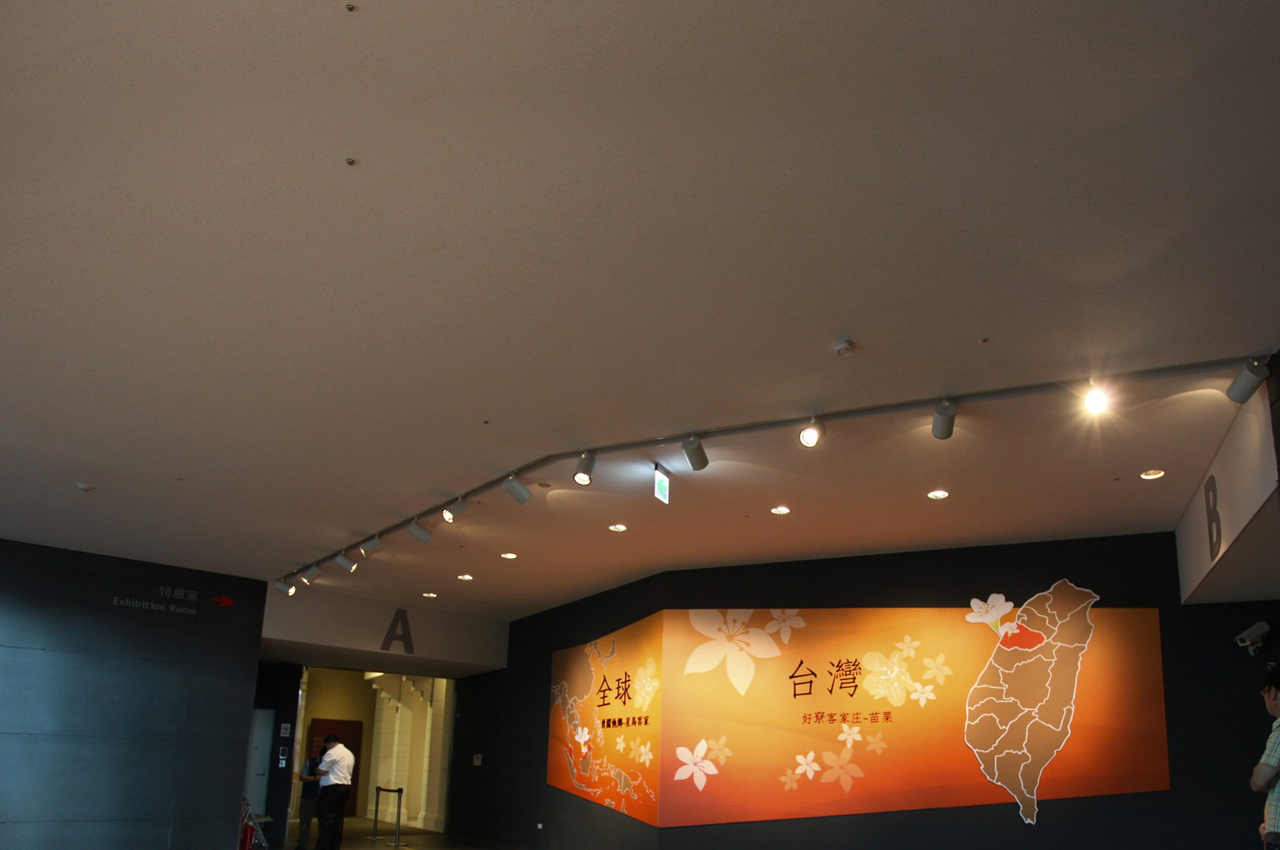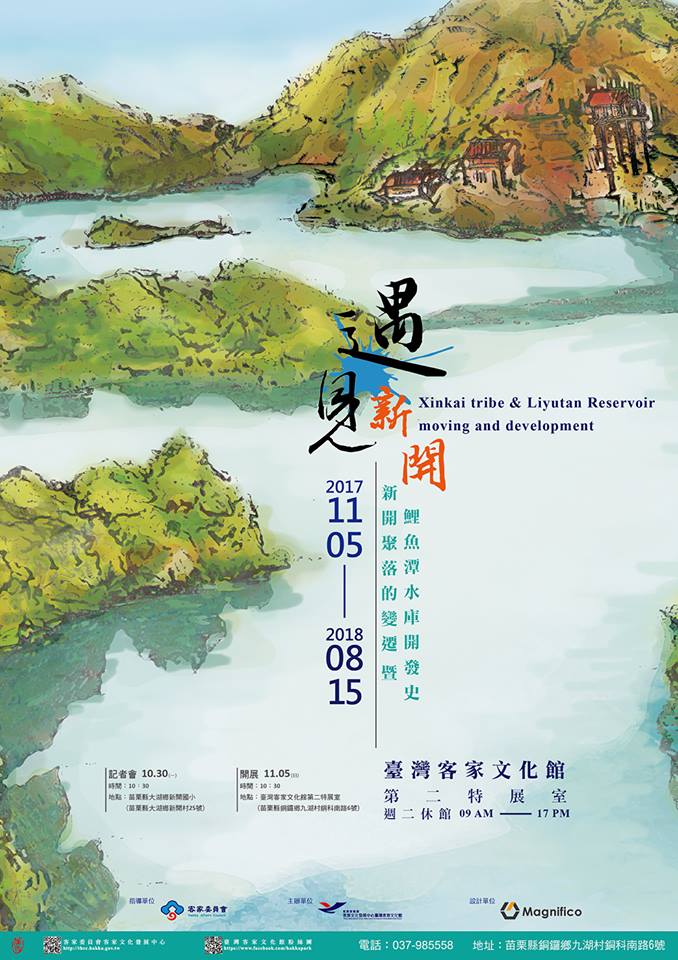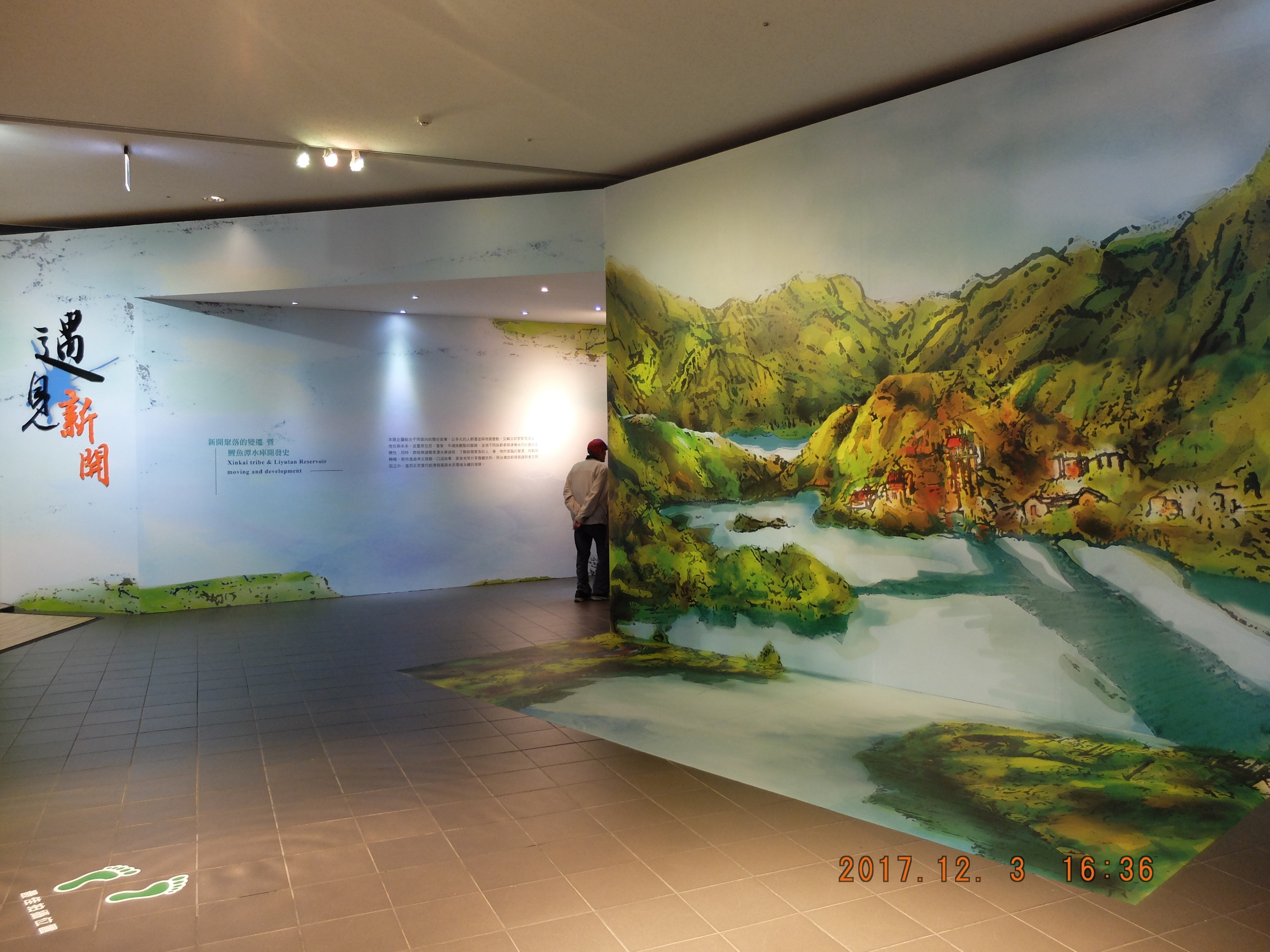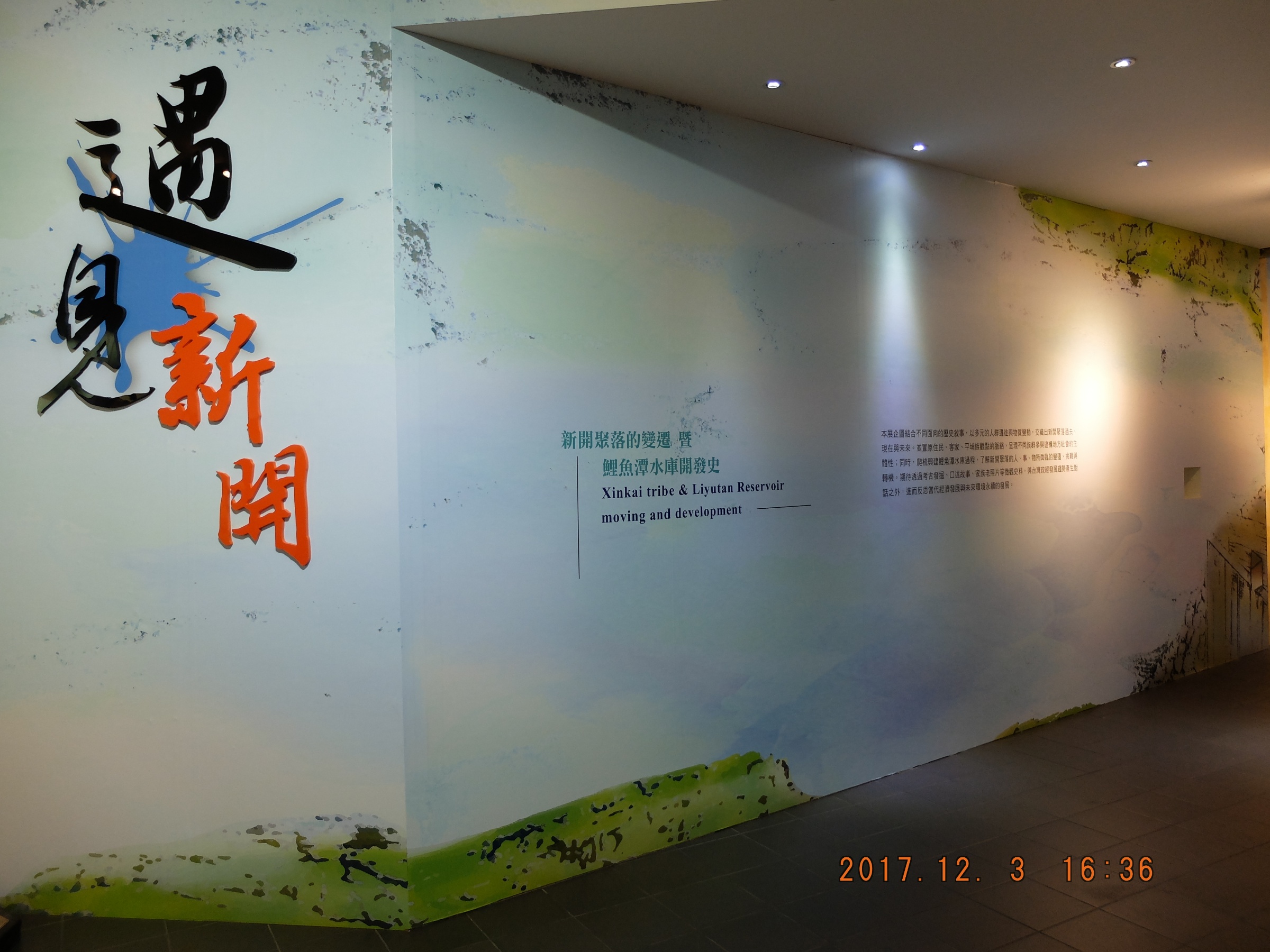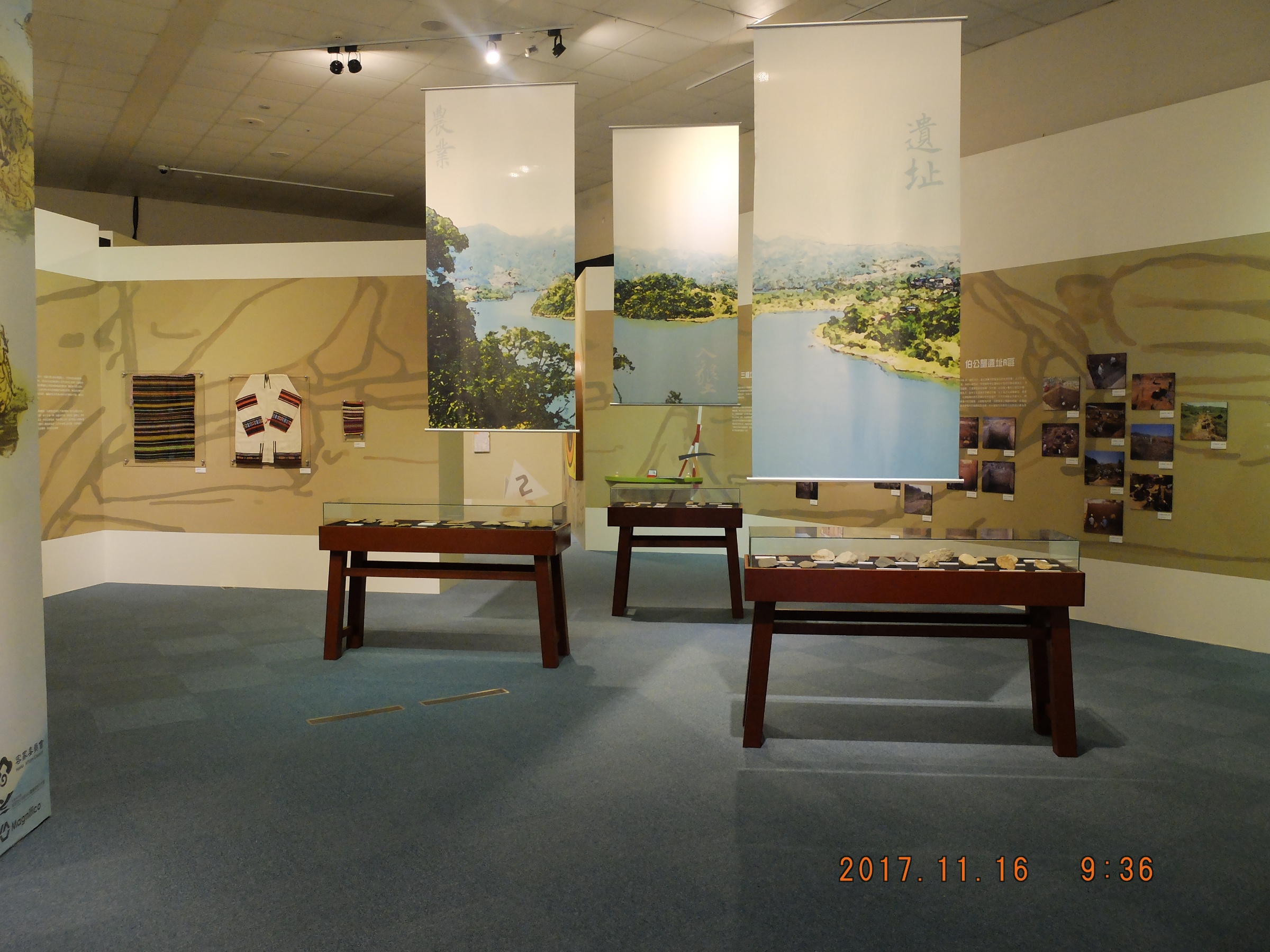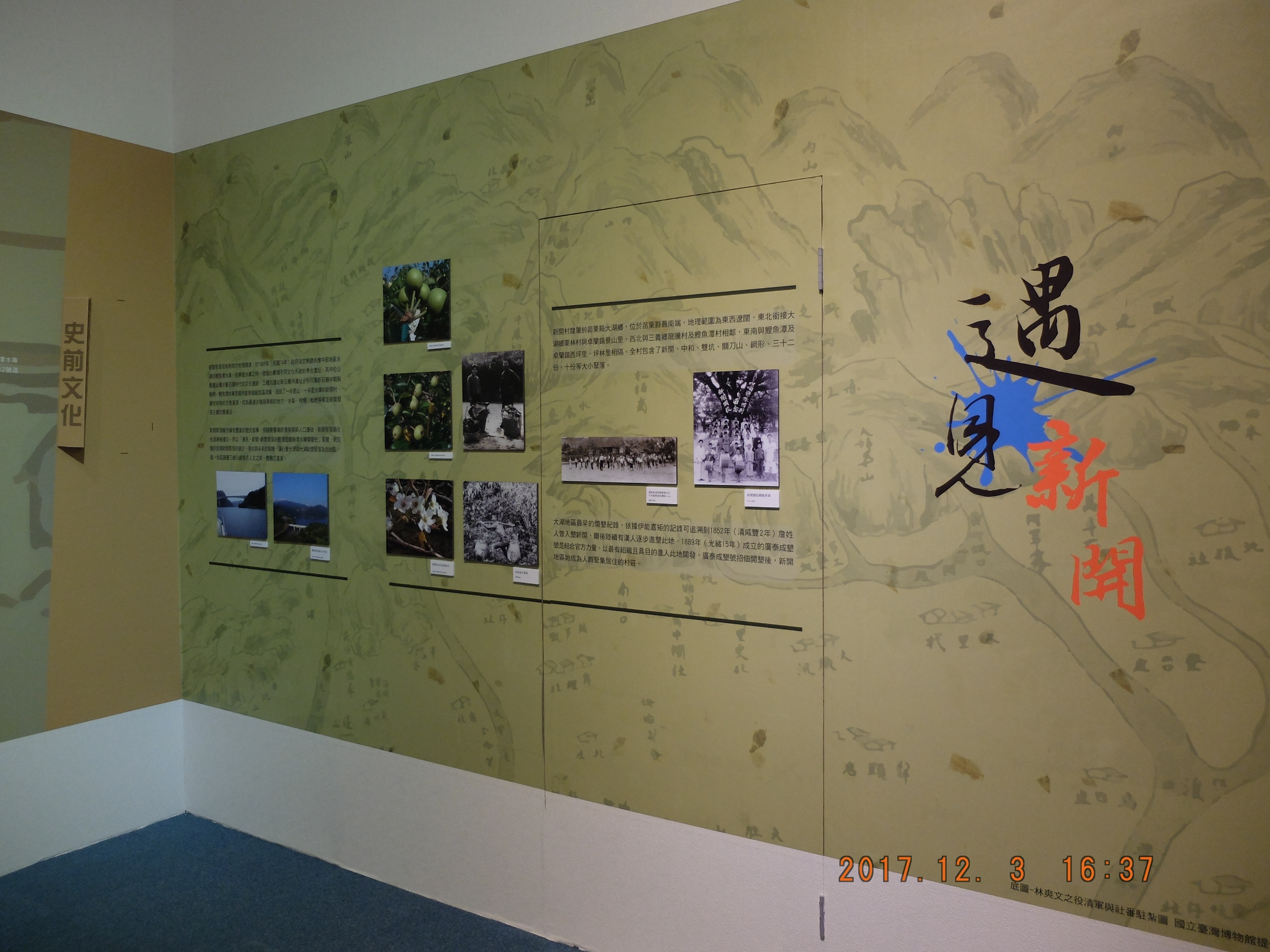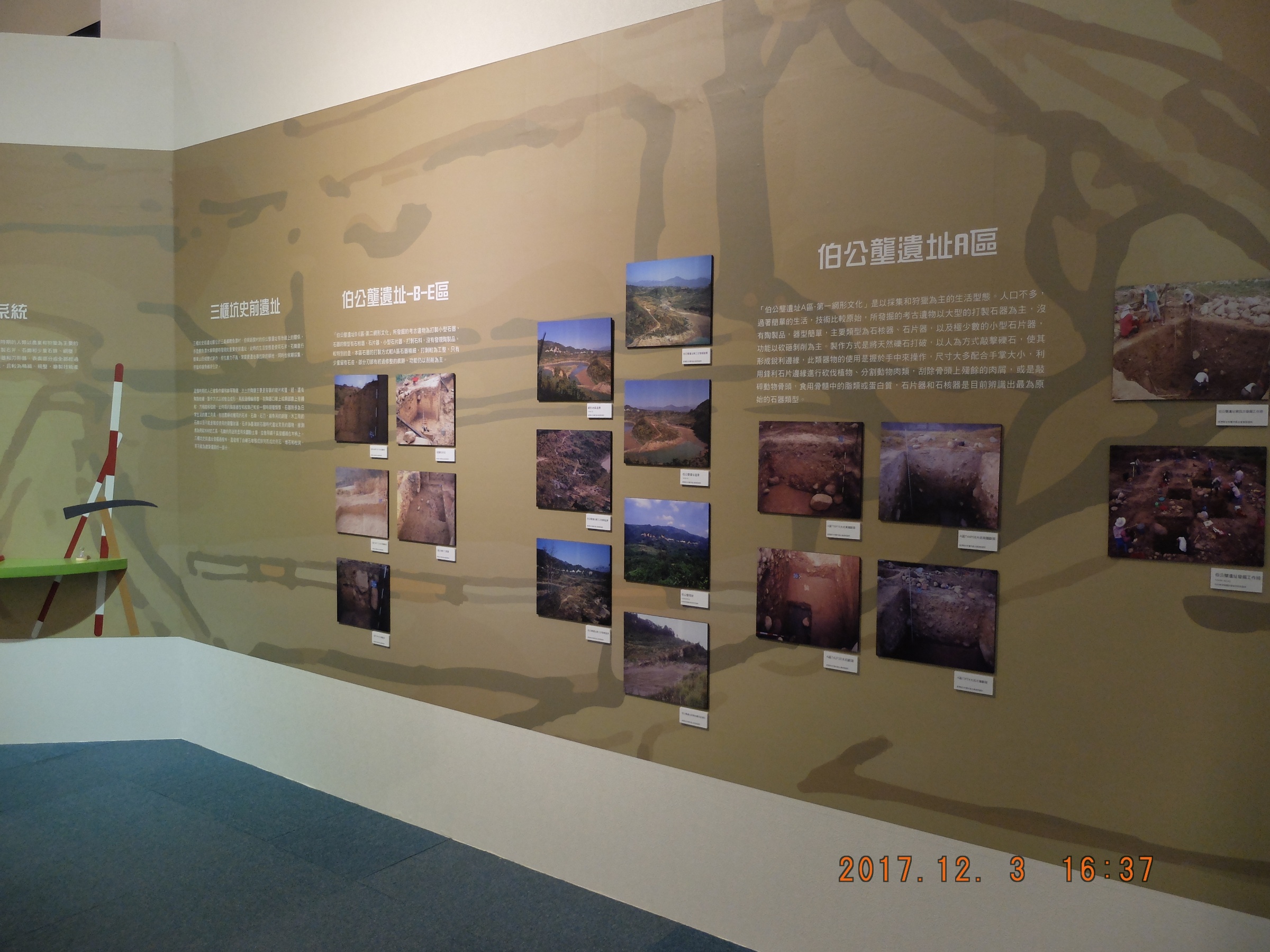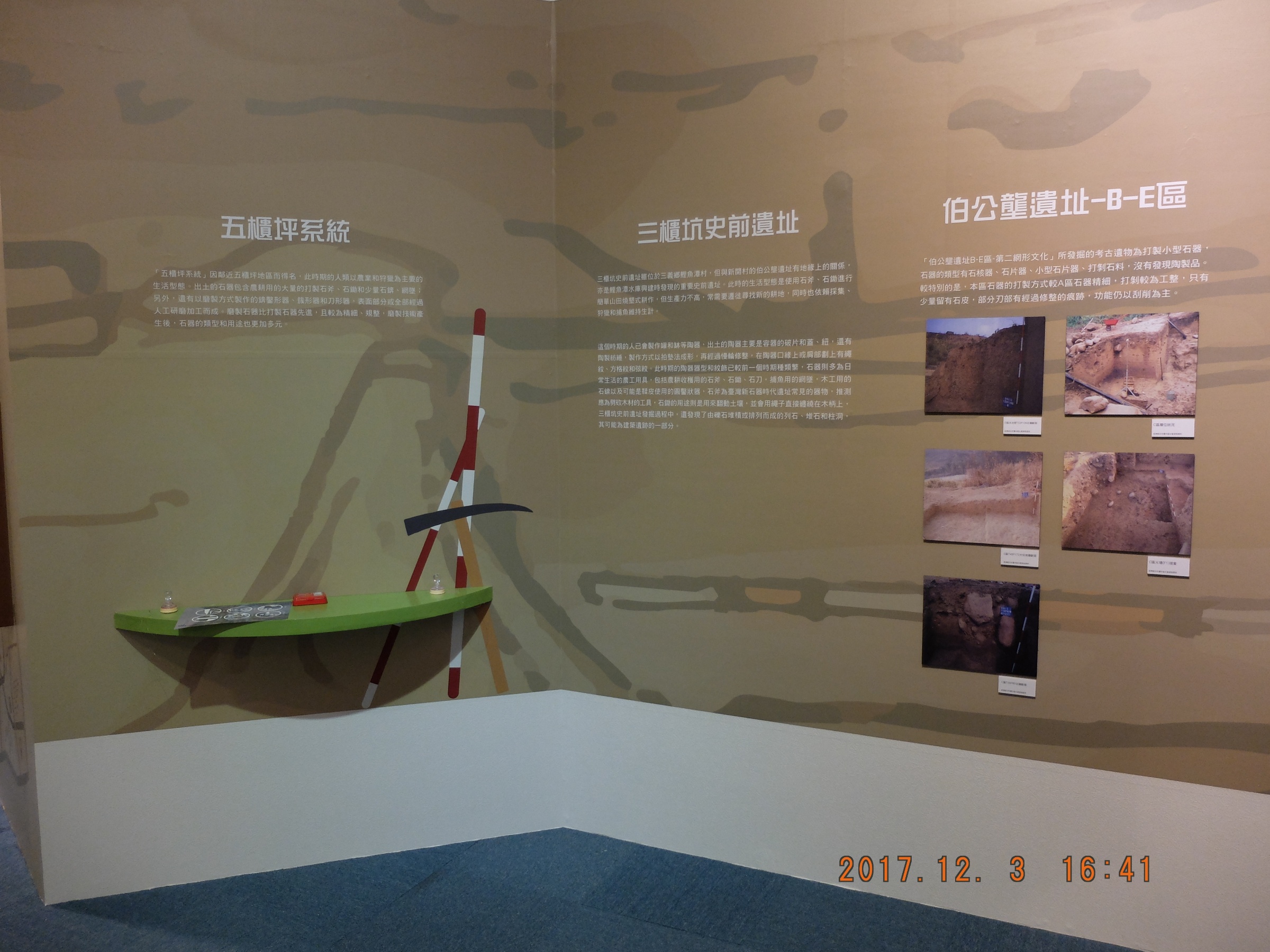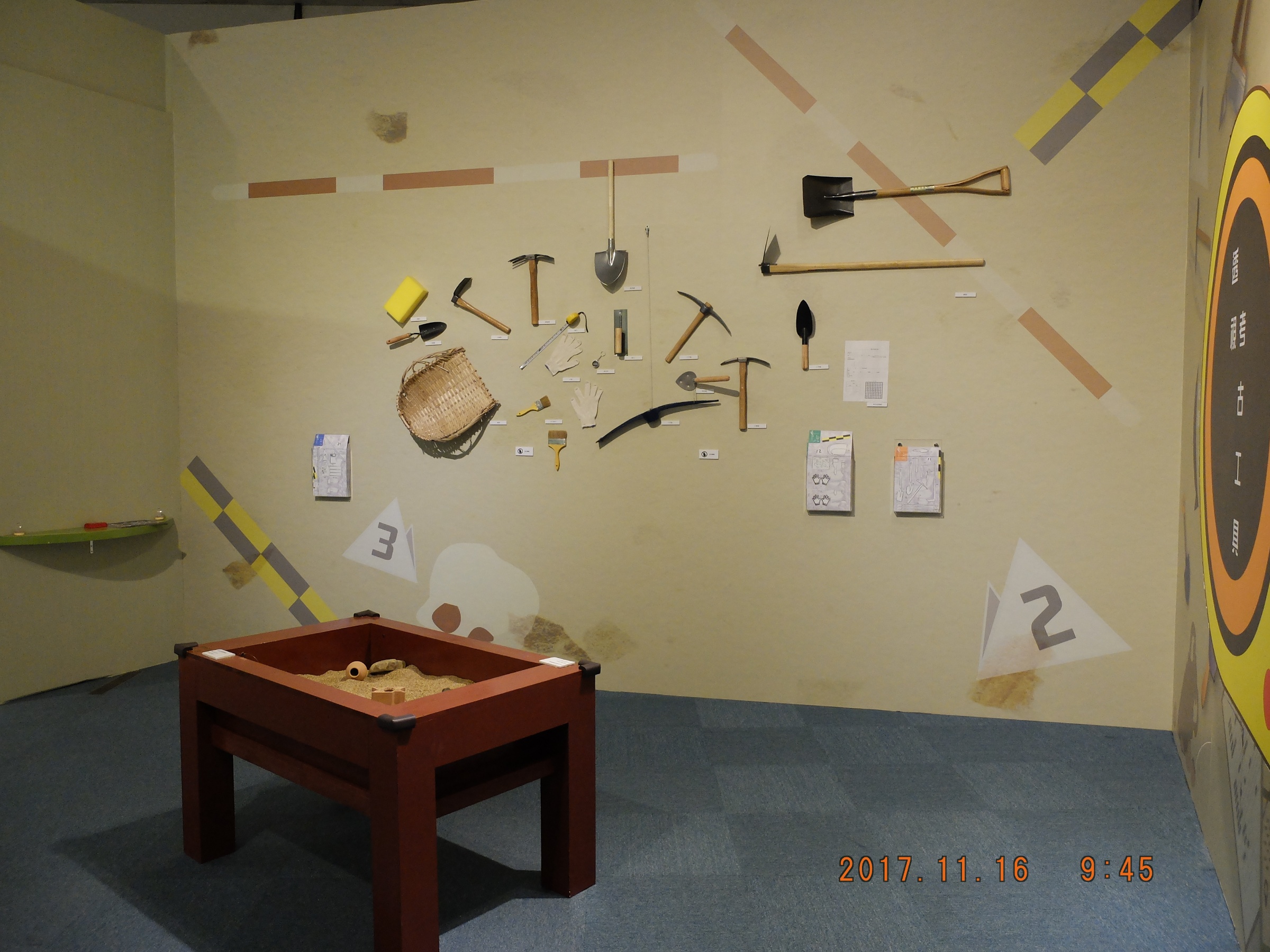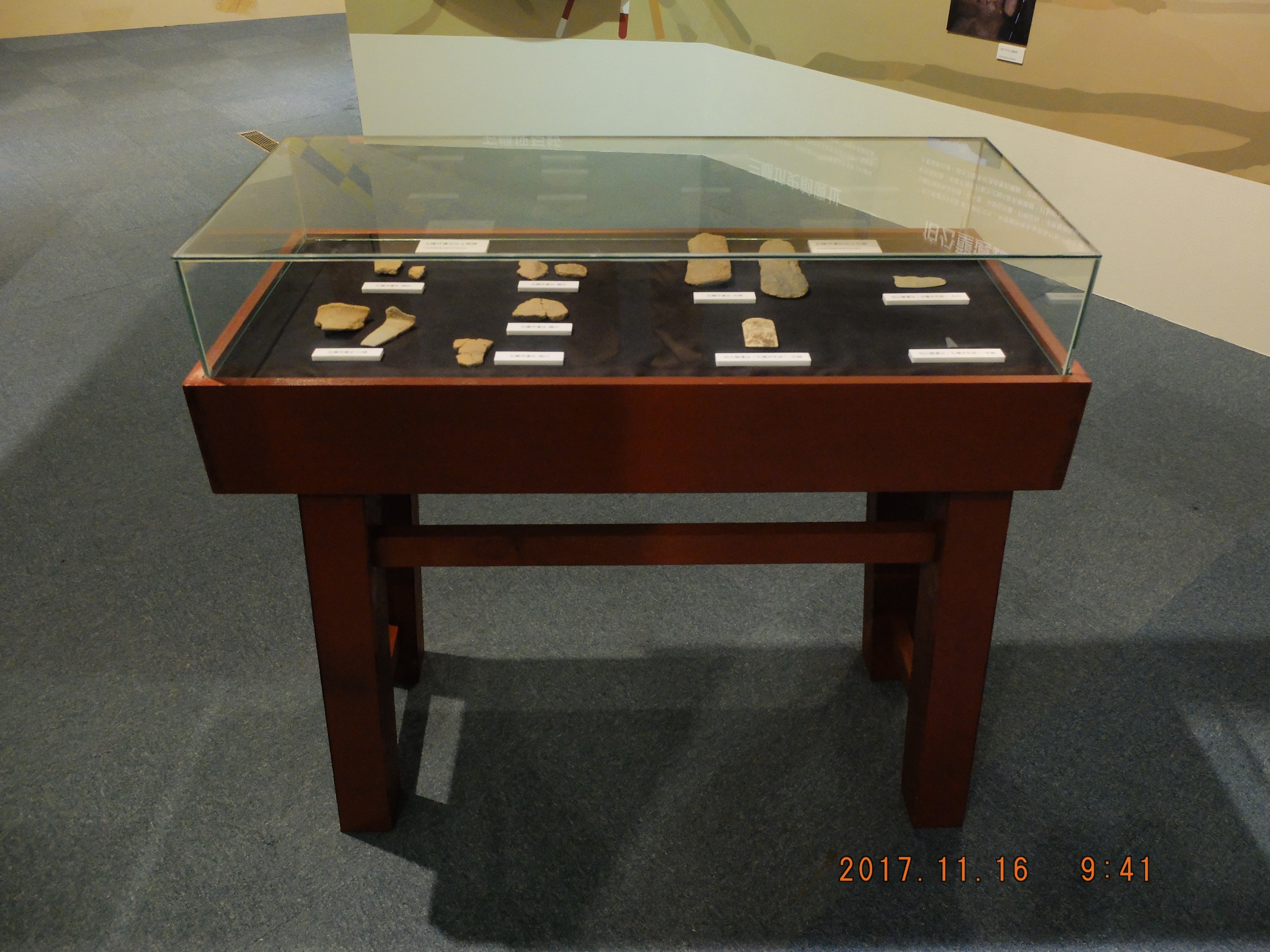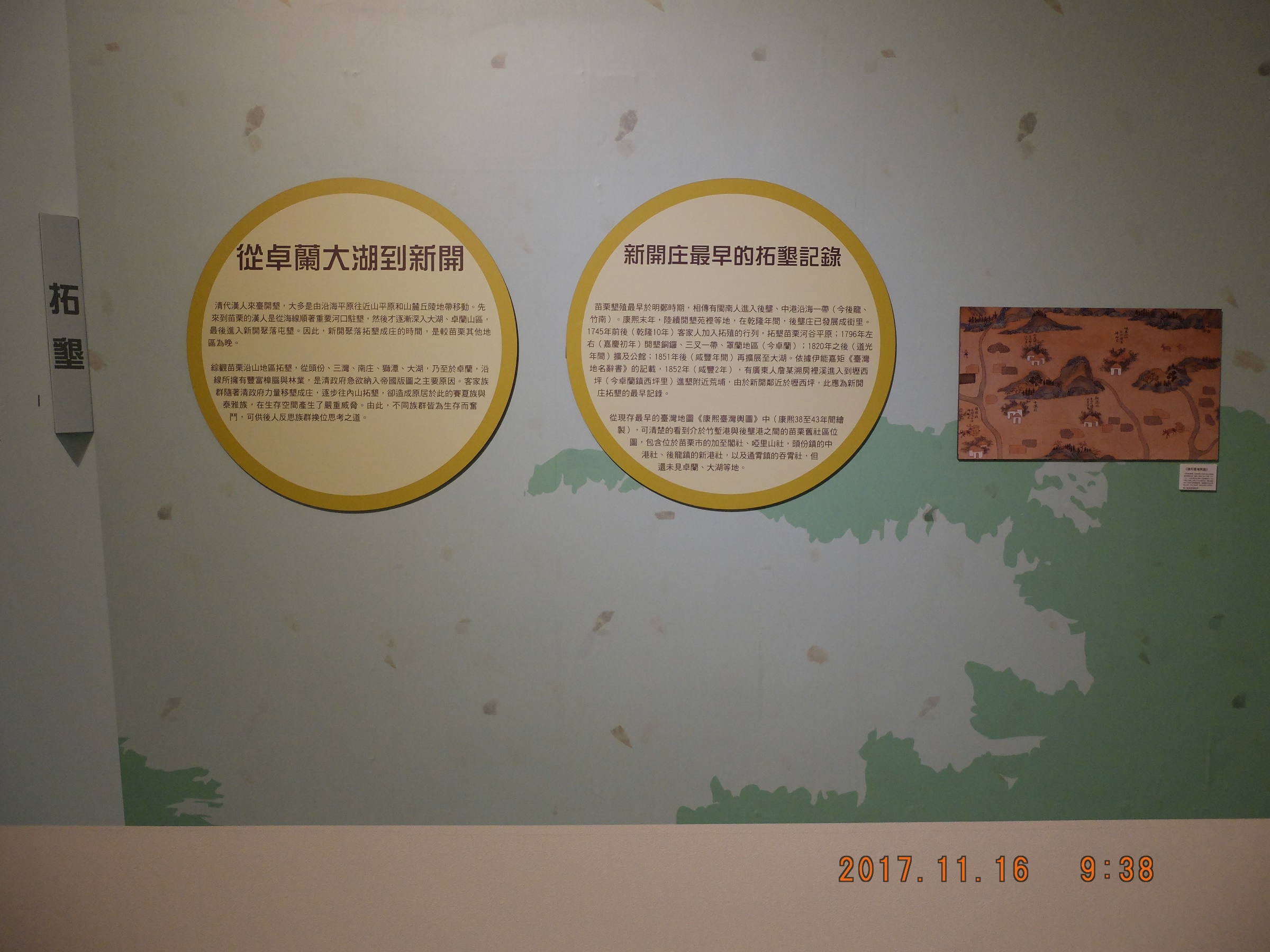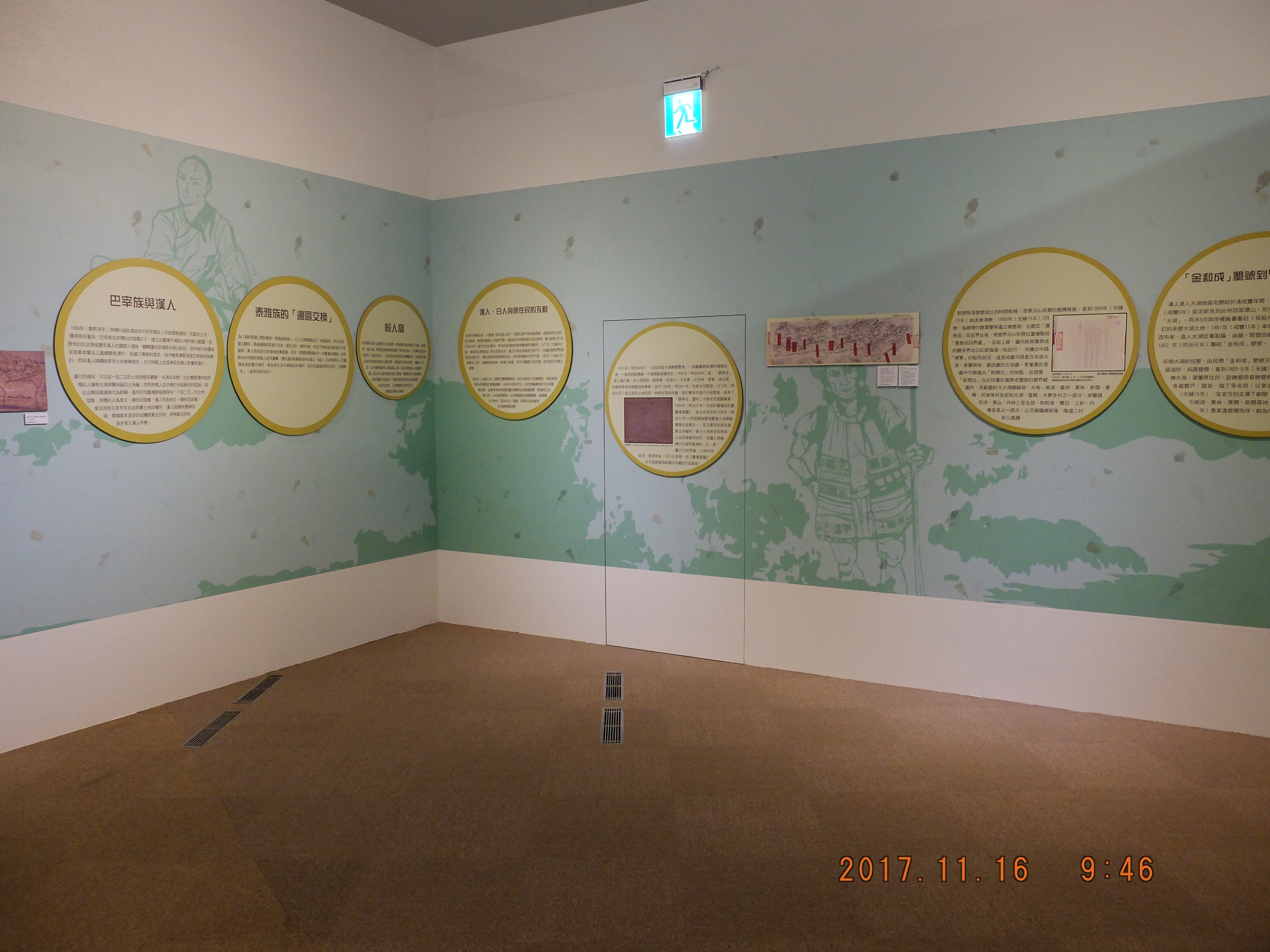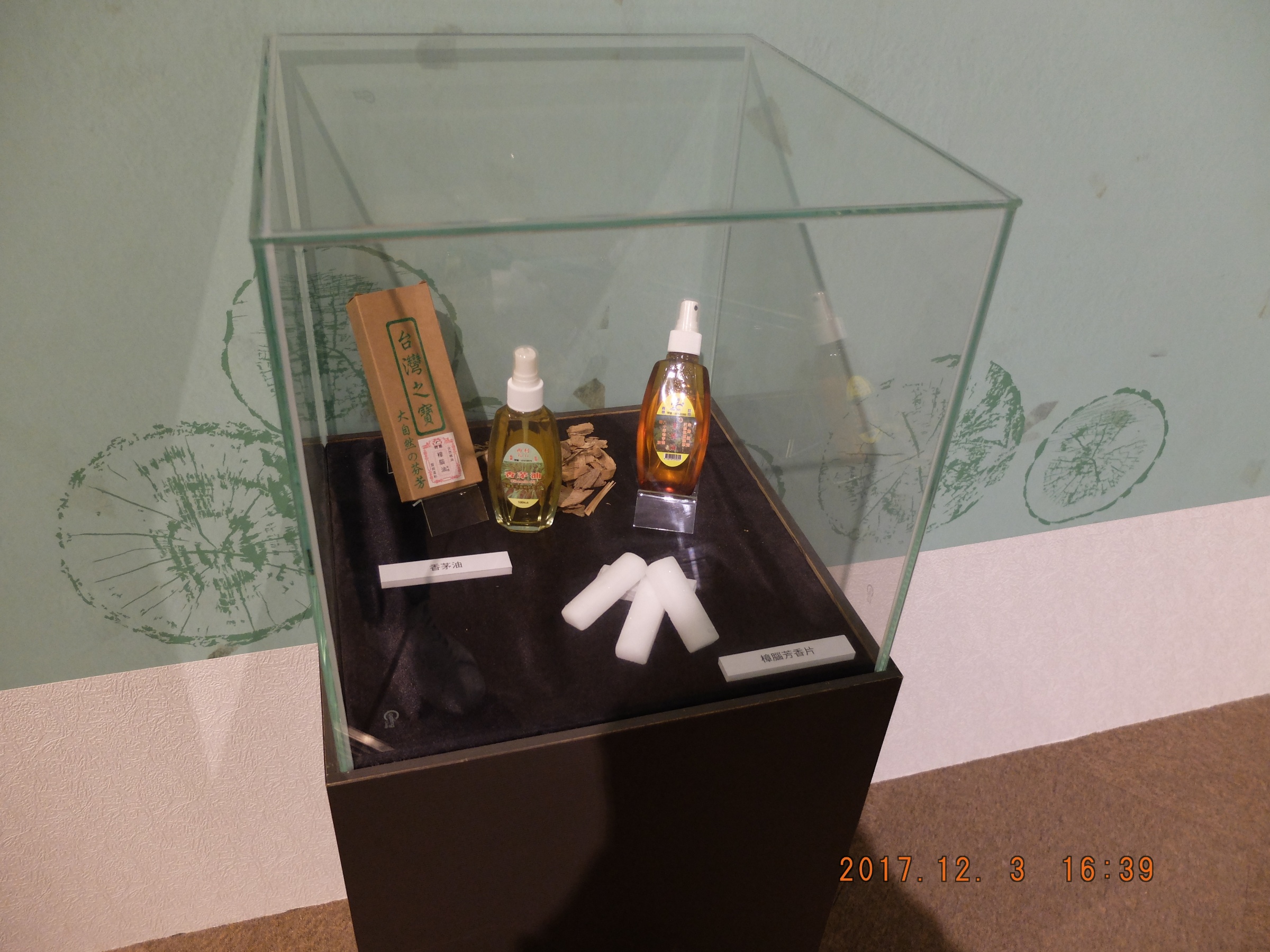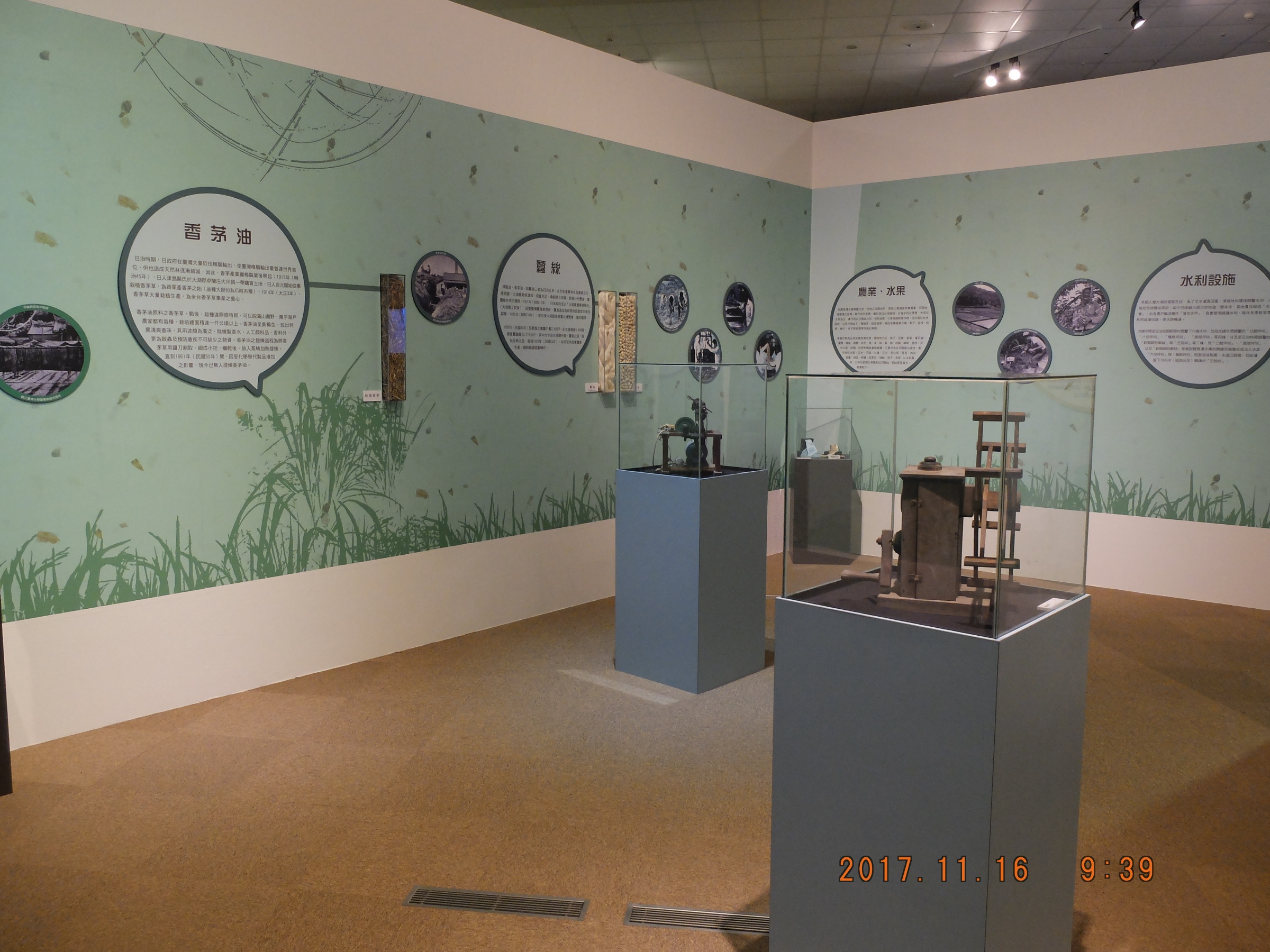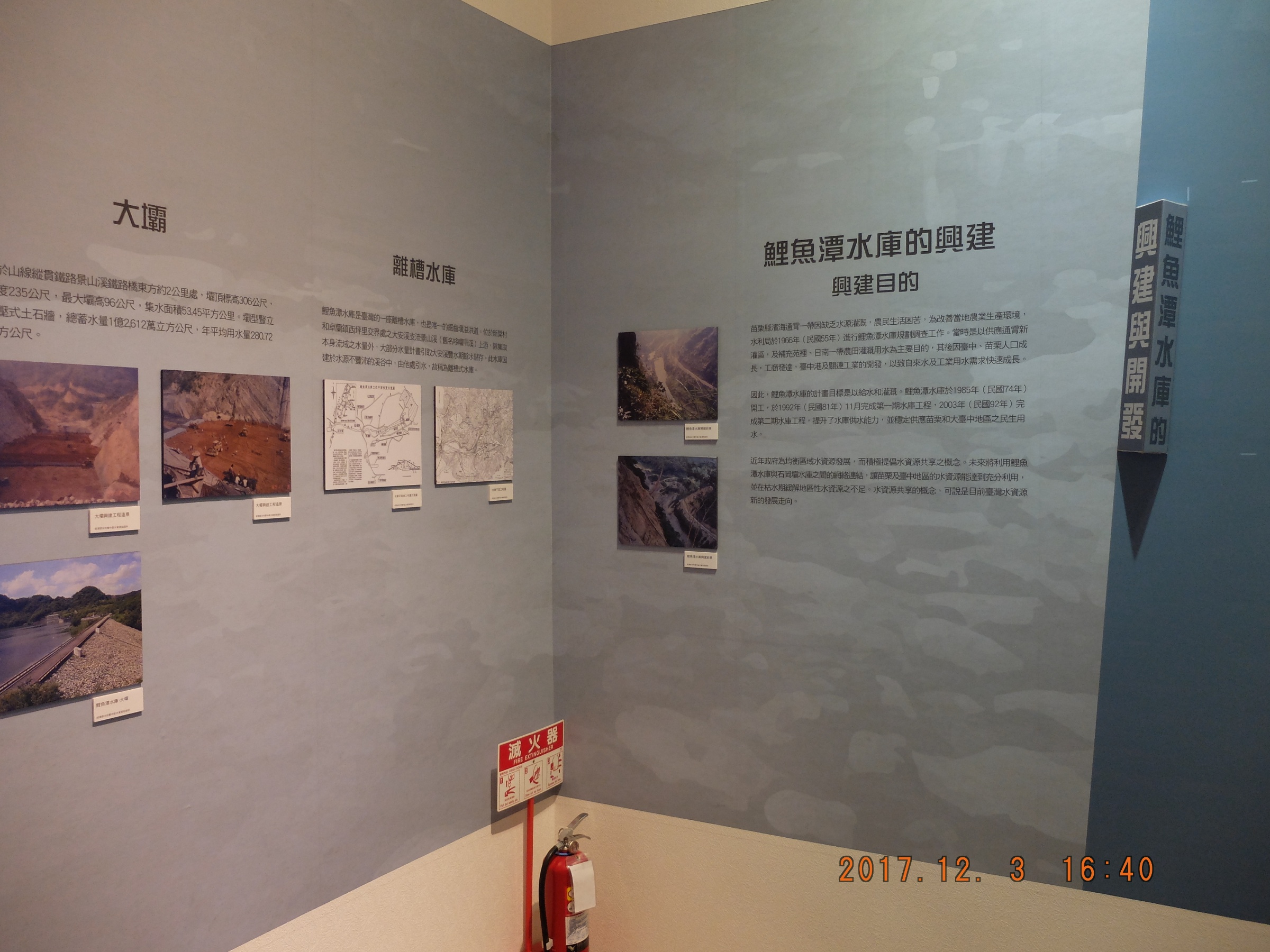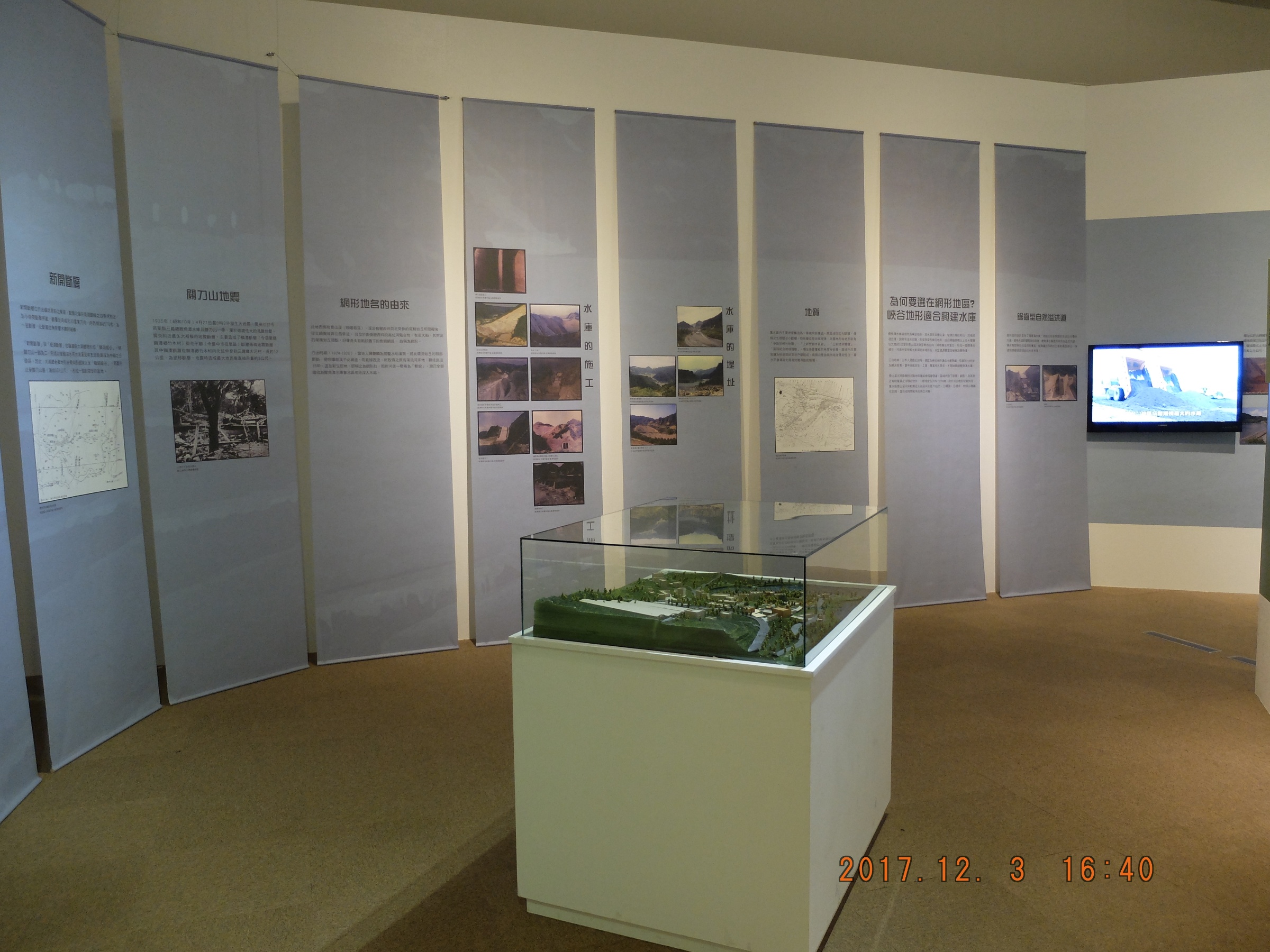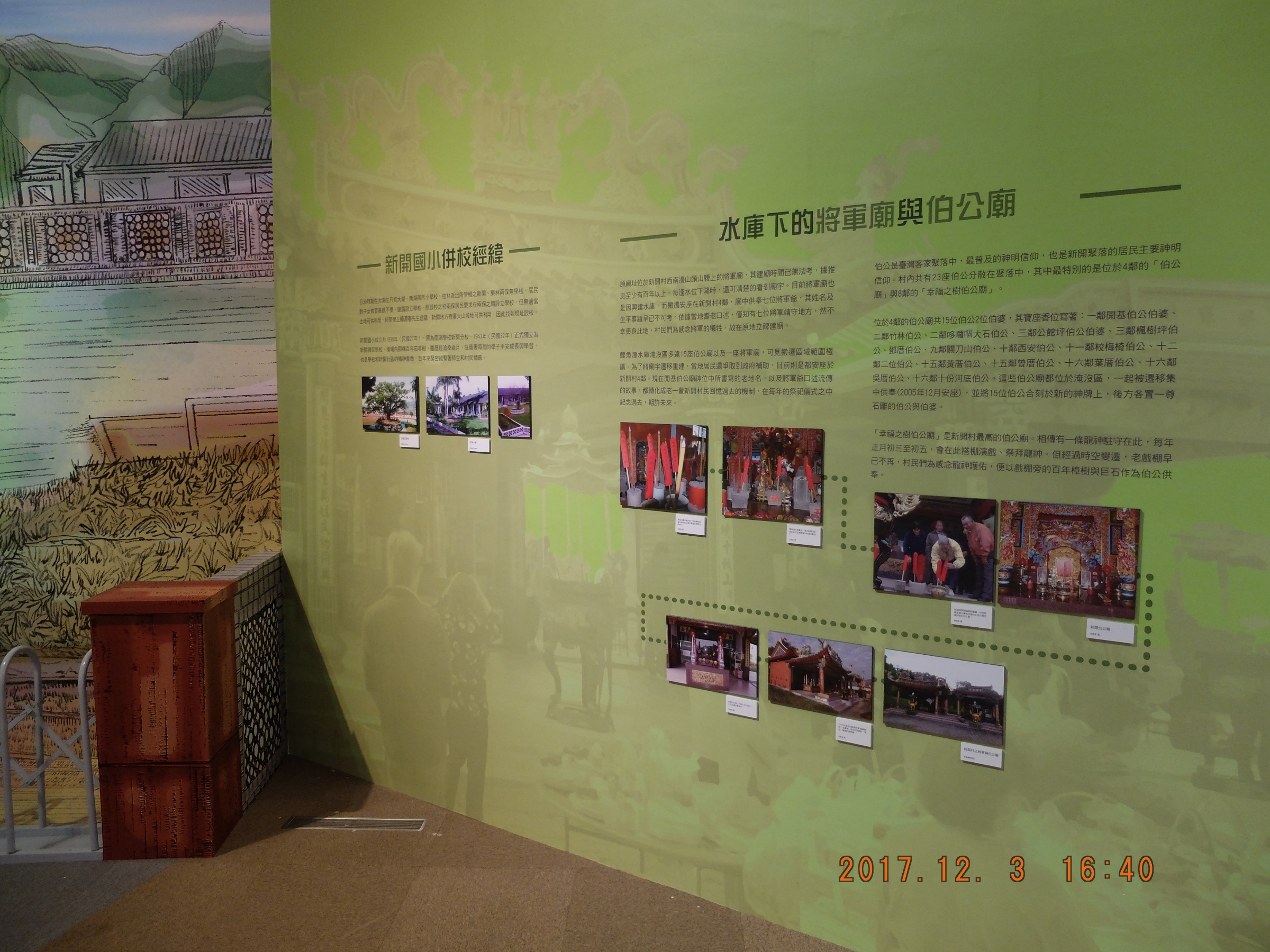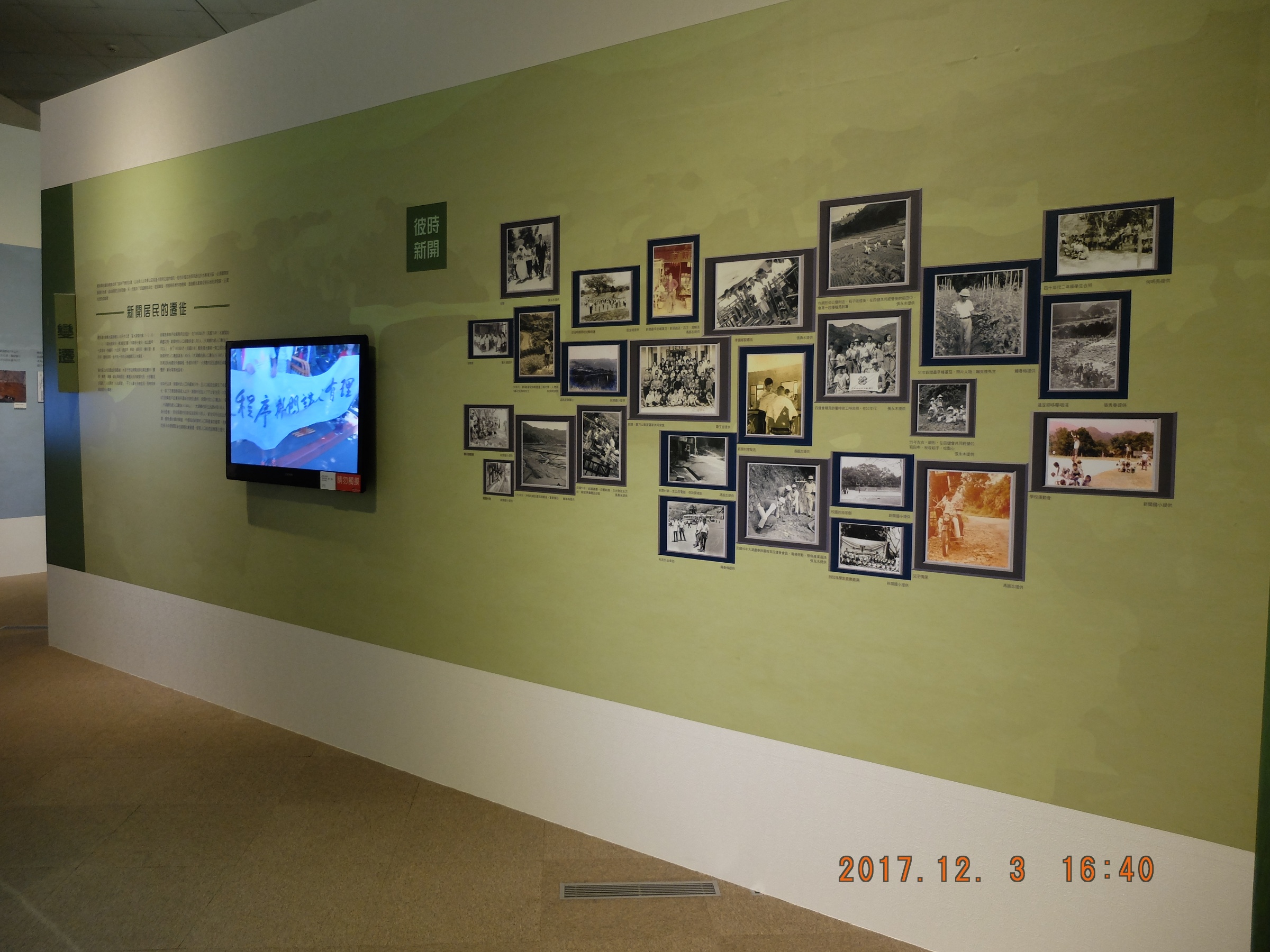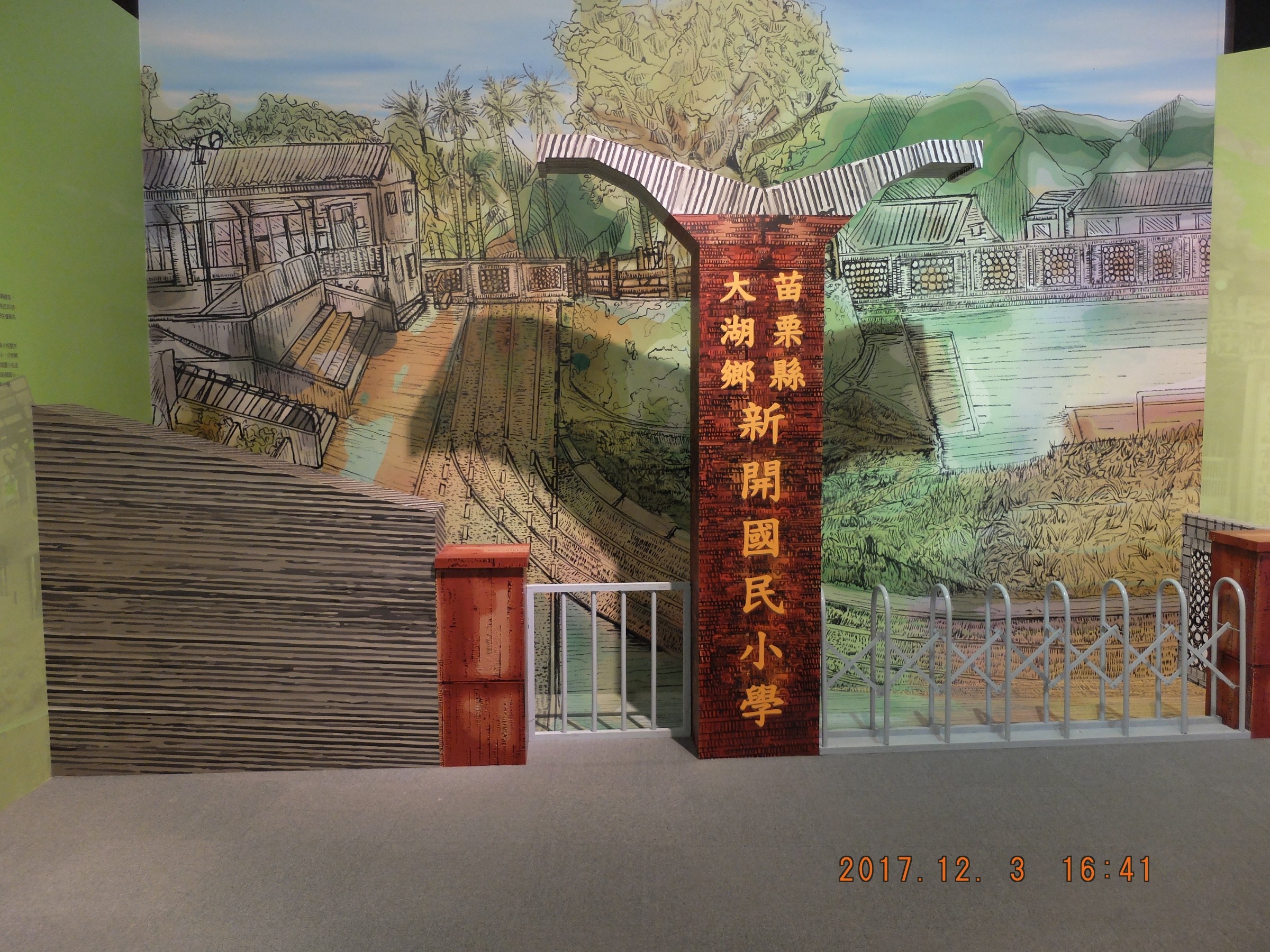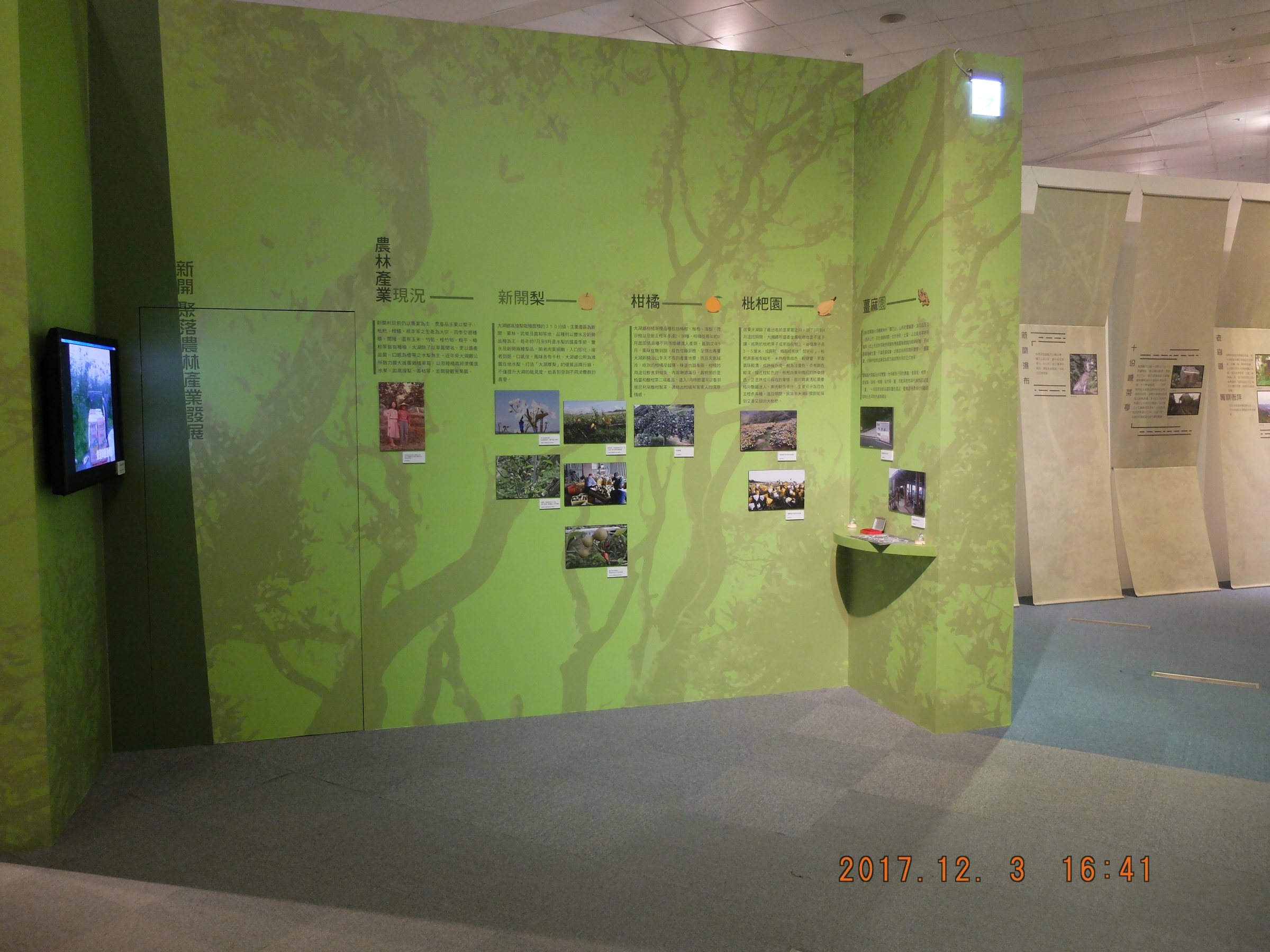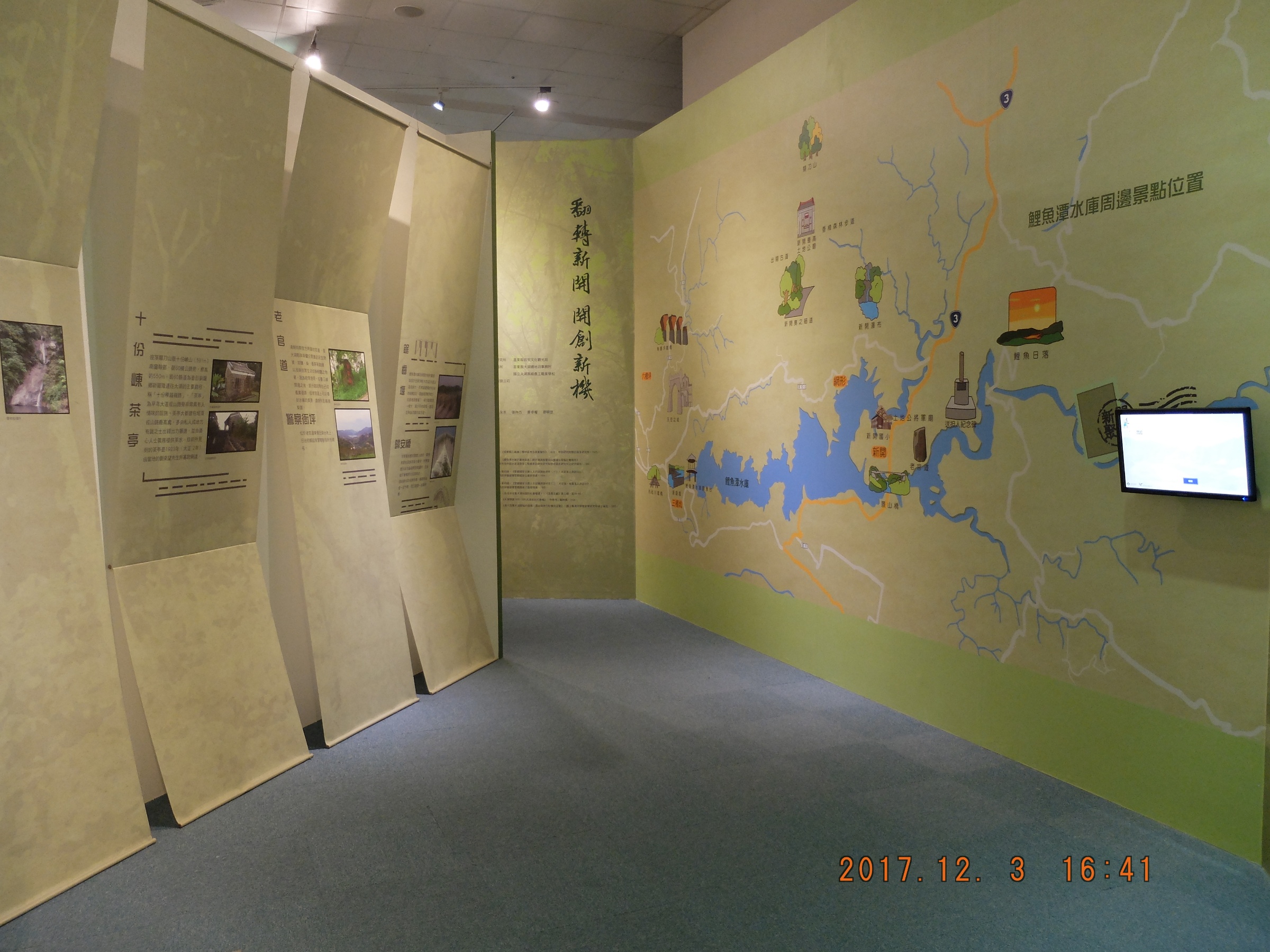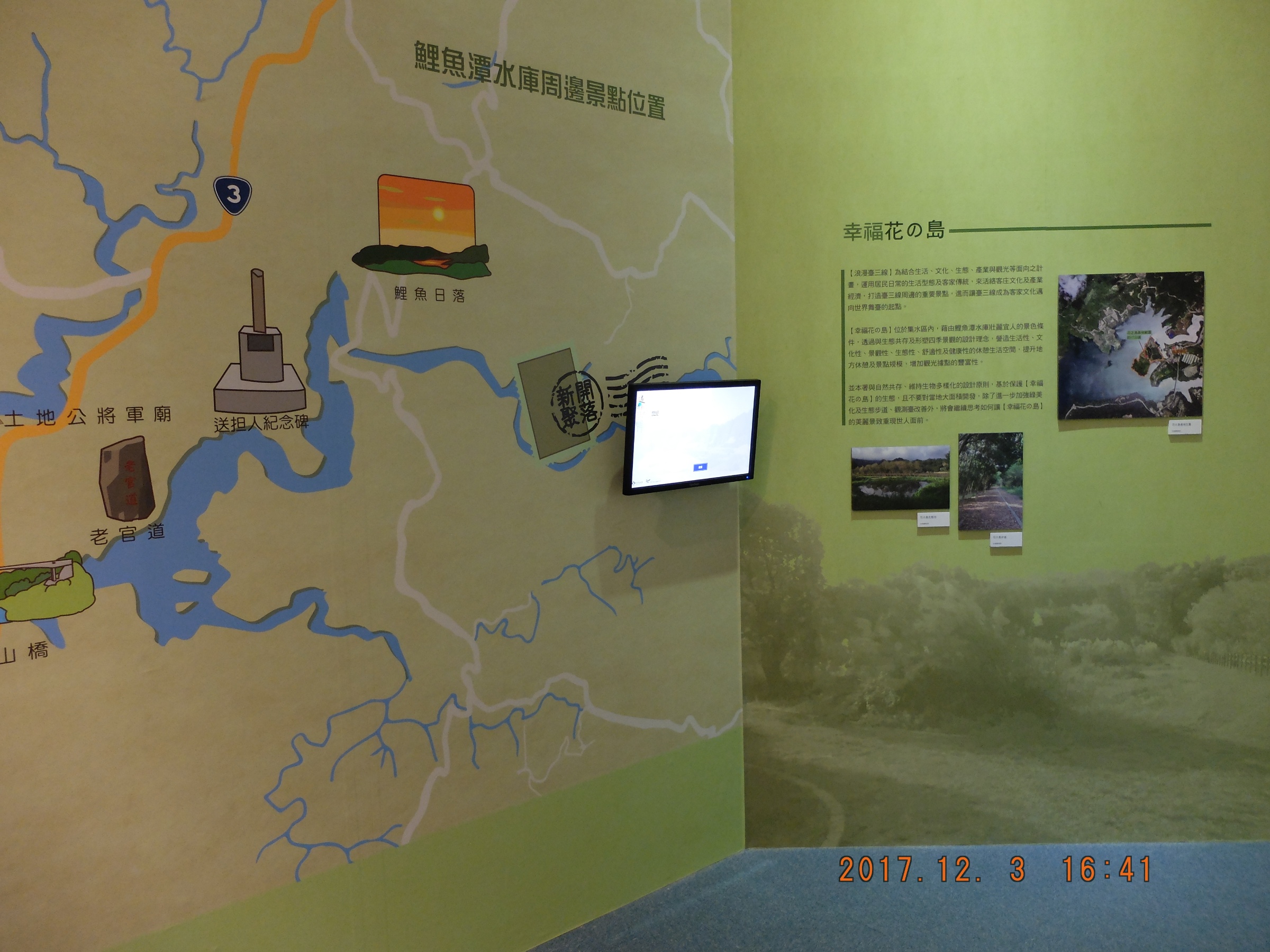Exhibition Review
2nd Special Exhibition Hall - The Development of Xinkai Tribe and the history of building Liyutan Dam
|
1. Introduction of the exhibition This exhibition attempts to show the past, current state and future of the Xinkaitribes with different perspectives of historical stories, multidimensional population movement and product flow. Based on the parallel perspectives of native Taiwanese, Hakka and Taiwanese Plains Indigenous Peoples, we demonstrate the agency of different tribes that they participated in constructing the local society. Meanwhile, we elaborate the building process of Liyutan Damto explain the changes, challenges and cornerstone of the Xinkaitribes’ people, products and events. Through the archaeological findings, oral history and micro historical materials like old family photos, we expect to have a dialogue between the historical and current economic development of Taiwan. We also expect people’s reflection on Taiwanese economic development and the continuous environmental development in the future.
2. Seeing Xinkai Although Xinkai tribe has a rich history to tell, the history of Xinkai is gradually forgotten due to the economic development of Taiwan and population movement. Therefore, the “Meeting.Xinkai - The Development of Xinkai Tribe and the history of building Liyutan Dam” exhibition will fully show the past, current state and future of the Xinkai tribes. Starts from Dahu Xinkaitribe, people can further understand the beauty, humanities and once flourishing industries of Hakka along Taiwan 3rd line highway.
3. Liyutan Dam and the finding of prehistoric sites The finding of Xinkai village prehistoric sites originated from the building project of Liyutan Dam. In 1984, Taiwanese Water Resources Agency investigated the environmental influence of Liyutan Dam building project in Miaoli.In the project area, which included the east side of the 12thneighbor of Dahu Xinkai village, the 13thneighbor of Liyutan village of Sanyi Township, and near the 52nd highway of Miaoli, people found 12 prehistoric sites. These sites included Bogonglong and Sanguikeng.
4. Since the Qing dynasty, the Han Chinese came to Taiwan and began reclamation. Most of them moved from the coast line plain to the mountain-side plain, and finally to the mountain areas.The first Han Chinese who arrived Miaoli came from the sea and moved along the major river outlets to have their reclamation. They then came to Dahu and Zhuolan mountain area and began their reclamation in Xinkai at last. Therefore, Xinkai was the last place that was developed to be a township when compared to other places in Miaoli.
5. The flourishing forest industry In the Qing dynasty, Han Chinese developed Xinkai because ofthe broad forest area. Most of them participated in the camphor industry and lumber industry, they became the major industries. Camphor manufacturing was one of their major ways of income. In the Japanese ruling period, Japanese promoted sugar cane farming and cane sugar manufacturing industry in Taiwan. Japanese also introduced citronella farming and sericulture into Dahu. Therefore, camphor oil, citronella oil and silk were the three mostly developed industries in Miaoli mountain area and Dahu area since the Japanese ruling period.
6. In the Binhai and Tongxiao area of Miaoli, the water resource was insufficient and the peasants suffered from it. In order to improve the agriculture production power, Taiwanese Water Resources Agency planned the Liyutan Dam building project in 1966. It was planned to supply water to Tongxiao new agriculture area and supported the agriculture water requirement in Yuanli and Rinan. Later, as the population of Taichung and Miaoli bloomed, the business and industrial development, the development of the production chain among Taiwan, China and Hong Kong, the needs of family-used water and industrial-used water increased rapidly.
7. The Catchment area of Liyutan Dam is 53.45 km2 large. he building of this dam totally flooded the 1st, 2nd, 10th, 11th ,12th and 15th neighbors, and partly flooded the 3rd to 7th and the 16th neighbors. The local residents therefore moved to Zhuolan, Dongshi Township and other area. There were also 15 local god temples moved because of this. Recently, due to the reason of low birth rate, there are some school-merging incidents.
8. The revolution of Xinkai The Taiwan 3rd Highway starts from Daxi of in Taoyuan in the north, goes through Longtan, Hsinchu Guanxi, Neiwan, Jianshi, Beipu, Emei, Miaoli Sanwan, Nanzhuang, Shitan, Dahu, Zhuolan, and reaches Taichung Dongshi in the east. This highway shows the process of crossover of different tribes and groups. It also possesses plenty natural environment views, historical sites, humanities and cultural memory. The romantic Taiwan 3rd Highway inherits the history and creates the present. In the future, there will be more development and opportunity in this place. Industries, government and academic institutes are all working on show the beauty of Hakka presence Taiwan 3rd Highway.
|
